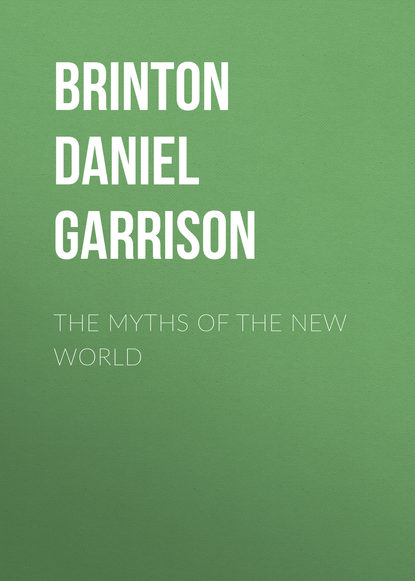По всем вопросам обращайтесь на: info@litportal.ru
(©) 2003-2024.
✖
The Myths of the New World
Настройки чтения
Размер шрифта
Высота строк
Поля
The words for fire and sun in American languages are usually from distinct roots, but besides the example of the Natchez I may instance to the contrary the Kolosch of British America, in whose tongue fire is kan, sun, kakan (gake, great), and the Tezuque of New Mexico, who use tah for both sun and fire.
205
Doc. Hist. of New York, ii. p. 634.
206
Emory, Milt’yReconnoissanceof New Mexico, p. 30.
207
Narrative of John Tanner, p. 161.
208
Loskiel, Ges. der Miss. der evang. Brüder, p. 55.
209
Nar. of John Tanner, p. 351.
210
Sahagun, Hist. Nueva España, lib. vi. cap. 4.
211
Letts. Edifiantes et Curieuses, iv. p. 104, Oviedo; Hist. du Nicaragua, p. 49; Gumilla, Hist. del Orinoco, ii. cap. 2.
212
Oviedo, Hist. Gen. de las Indias, p. 16, in Barcia’s Hist. Prim.
213
Presdt’s Message and Docs. for 1851, pt. iii. p. 506.
214
Sahagun, Hist. de la Nueva España, i. cap. 13.
215
Voyage Pittoresque dans le Yucatan, p. 49.
216
Davila Padilla, Hist. de la Prov. de Santiago de Mexico, lib. ii. cap. 88 (Brusselas, 1625); Palacios, Des. de Guatemala, p. 40; Garcia, Or. de los Indios, p. 124. To such an extent did the priests of the Algonkin tribes who lived near Manhattan Island carry their austerity, such uncompromising celibates were they, that it is said on authority as old as 1624, that they never so much as partook of food prepared by a married woman. (Doc. Hist. New York, iv. p. 28.)
217
Martius, Von dem Rechtzustande unter den Ureinwohnern Brasiliens, p. 28, gives many references.
218
Id. ibid., p. 61.
219
Le Livre Sacré des Quichés, Introd., pp. clxi., clxix.
220
Travels in Yucatan, i. p. 434.
221
Schoolcraft, Ind. Tribes, v. pp. 416, 417.
222
Mrs. Eastman, Legends of the Sioux, p. 161.
223
Rel. de la Nouv. France, 1634, p. 27; Schoolcraft, Algic Researches, ii. p. 116; Ind. Tribes, v. p. 420.
224
De Smet, Western Missions, p. 135; Schoolcraft, Ind. Tribes, i. p. 319.
225
Mrs. Eastman, Legends of the Sioux, p. 72. By another legend they claimed that their first ancestor obtained his fire from the sparks which a friendly panther struck from the rocks as he scampered up a stony hill (McCoy, Hist. of Baptist Indian Missions, p. 364).
226
Mrs. Eastman, ubi sup., p. 158; Schoolcraft, Ind. Tribes, iv. p. 645.
227
Waitz, Anthropologie, iii. p. 417; Müller, Am. Urrelig., p. 271.
228
On the myth of Catequil see particularly the Lettre sur les Superstitions du Pérou, p. 95 sqq., and compare Montesinos, Ancien Pérou, chaps. ii., xx. The letters g and j do not exist in Quichua, therefore Ataguju should doubtless read Ata-chuchu, which means lord, or ruler of the twins, from ati root of atini, I am able, I control, and chuchu, twins. The change of the root ati to ata, though uncommon in Quichua, occurs also in ata-hualpa, cock, from ati and hualpa, fowl. Apo-Catequil, or as given by Arriaga, another old writer on Peruvian idolatry, Apocatequilla, I take to be properly apu-ccatec-quilla, which literally means chief of the followers of the moon. Acosta mentions that the native name for various constellations was catachillay or catuchillay, doubtless corruptions of ccatec quilla, literally “following the moon.” Catequil, therefore, the dark spirit of the storm rack, was also appropriately enough, and perhaps primarily, lord of the night and stars. Piguerao, where the g appears again, is probably a compound of piscu, bird, and uira, white. Guachemines seems clearly the word huachi, a ray of light or an arrow, with the negative suffix ymana, thus meaning rayless, as in the text, or ymana may mean an excess as well as a want of anything beyond what is natural, which would give the signification “very bright shining.” (Holguin, Arte de la Lengua Quichua, p. 106: Cuzco, 1607.) Is this sister of theirs the Dawn, who, as in the Rig Veda, brings forth at the cost of her own life the white and dark twins, the Day and the Night, the latter of whom drives from the heavens the far-shooting arrows of light, in order that he may restore his mother again to life? The answer may for the present be deferred. It is a coincidence perhaps worth mentioning that the Augustin monk who is our principal authority for this legend mentions two other twin deities, Yamo and Yama, whose names are almost identical with the twins Yama and Yami of the Veda.
229











